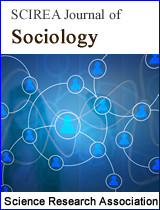An Analysis of the Historical Evolution of U.S.-China Science and Technology Relations (1949-2025)
DOI: 10.54647/sociology841451 32 Downloads 15497 Views
Author(s)
Abstract
This paper focuses on the evolution of Sino-US S&T relations from 1949 to 2025. From the early period of the founding of the country to the establishment of diplomatic relations between China and the United States in 1979, the United States' S&T policy towards China was mainly based on containment.After the establishment of diplomatic relations between China and the United States in 1979, the two sides signed the Sino-US Agreement on S&T Cooperation and set up the Sino-US Joint Committee on S&T Cooperation, which formally started the official government-to-government cooperation.During the period of about 40 years from 1979 to 2017, Sino-US S&T relations have become increasingly close and complex, with the cooperation extending from the traditional fields to the frontiers of Science and technology, although accompanied by competition and defense, but the overall cooperation is mainly. 2017 Trump administration, the United States will be in the field of science and technology as the forefront of strategic competition with China, the implementation of the "full decoupling" type of containment strategy, the United States and China to enter a period of comprehensive confrontation of science and technology. After Biden took office, he continued the tone of confrontation, adopting the strategy of "small yard and high wall", implementing precise blockade in core technology areas such as semiconductors and artificial intelligence, and building technical barriers jointly with allies to escalate the game of science and technology between China and the United States into a systematic confrontation. This evolution not only reflects the changes in the international pattern and the power contrast between the two countries in different periods, but also highlights the strategic core position of science and technology in the competition among great powers.
Keywords
China-US relations, technological competition, technological strength
Cite this paper
Tingting Wu,
An Analysis of the Historical Evolution of U.S.-China Science and Technology Relations (1949-2025)
, SCIREA Journal of Sociology.
Volume 9, Issue 3, June 2025 | PP. 241-255.
10.54647/sociology841451
References
| [ 1 ] | Xiong Chenxi.The Formation of the U.S. Government's Policy on Scientific and Technological Cooperation with China in the Late 1970s[J]. Party History Research and Teaching,2021(01):76-86. |
| [ 2 ] | Xiong Zhiyong. Sixty Years of U.S.-China Relations [M]. Beijing: People's Publishing House, 2009. |
| [ 3 ] | Zhang Jing. Deng Xiaoping and the development of Sino-US scientific and technological cooperation (1977-1979)[J]. Research on Contemporary Chinese History,2014,21(03):14-23+125. |
| [ 4 ] | Li Yang, Ding Guangchao, Huang Ning. An Analysis of the Evolution of U.S. S&T Policy toward China and Its Influencing Factors[J]. Science and Technology China,2022(07):1-4. |
| [ 5 ] | Wu Xinbo. Competition-oriented U.S. policy toward China and the transformation of U.S.-China relations[J]. Research on International Issues,2019(03):7-20+138. |
| [ 6 ] | Huang Qixuan. Great Power Strategic Competition and U.S. Technology Policy Changes toward China[J]. Diplomatic Review (Journal of Foreign Affairs College),2021(03):94-120+7. |
| [ 7 ] | Gu Xuming and Liu Yiming. U.S. technological competition with China and China's response under the perspective of technological power[J]. International Trade,2022(10):3-10+26. |
| [ 8 ] | SONG Guoyou,ZHANG Jiteng. Strategic Competition, Export Controls and U.S.-China Trade in High-Technology Products[J]. World Economy and Politics,2023(03):2-31+156. |
| [ 9 ] | Li Zheng. The Biden Administration's Science and Technology Policy Adjustment toward China and Its Impact[J]. Cyberspace Strategy Forum,2021(12):85-88. |
| [ 10 ] | Hou Guanhua. Interpretation of U.S. Think Tanks' Views on U.S.-China Science and Technology Competition and Suggestions for Countermeasures[J]. Journal of Intelligence,2021,40(04):33-41. |

